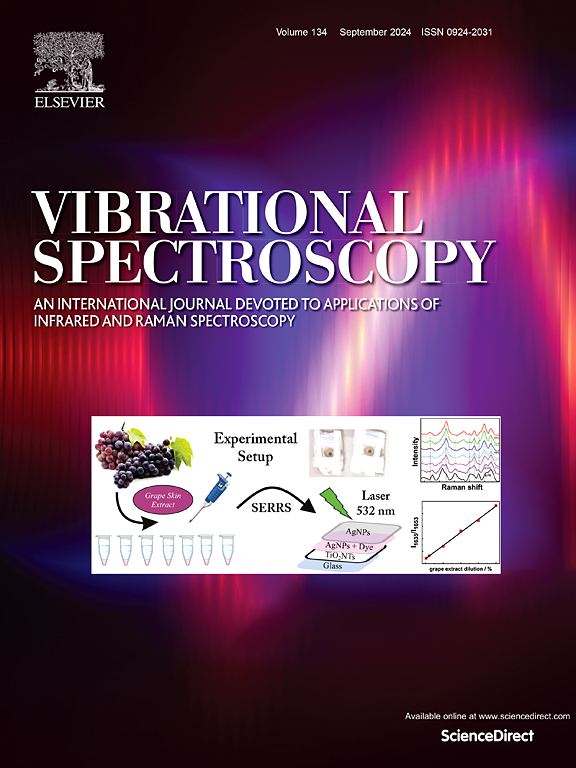Revisiting the Raman disorder band in graphene-based materials: A critical review
IF 3.1
3区 化学
Q2 CHEMISTRY, ANALYTICAL
引用次数: 0
Abstract
Graphene-based materials, including composites with metals, metal oxides, or polymers, demonstrate enhanced vibrational, electronic, and mechanical properties, rendering them highly promising for applications in energy, sensing, and catalysis. Vibrational spectroscopy is extensively used to characterize these materials, with primary focus on the G band (first-order in-plane vibrational band), the 2D band (second-order overtone), and the defect-activated D band. Although the D band frequently appears in chemically modified or structurally complex graphene systems, its spectral characteristics, such as peak position, linewidth, and relative intensity, alongside variations in the G and 2D bands, are often underreported or inadequately interpreted. This review underscores the critical importance of the D band in assessing disorder, edge structure, doping, and matrix interactions within graphene-based materials. Revisiting the role of the D band in conjunction with the G and 2D bands highlights the necessity for a more comprehensive vibrational analysis framework to accurately evaluate structural perturbations and interfacial effects in graphene-based materials.
重新审视石墨烯基材料中的拉曼无序带:一个重要的回顾
石墨烯基材料,包括与金属、金属氧化物或聚合物的复合材料,表现出增强的振动、电子和机械性能,使它们在能源、传感和催化方面的应用非常有前景。振动光谱被广泛用于表征这些材料,主要集中在G波段(一阶平面内振动带)、2D波段(二阶泛音)和缺陷激活的D波段。虽然D波段经常出现在化学修饰或结构复杂的石墨烯体系中,但其光谱特征,如峰位置、线宽和相对强度,以及G和2D波段的变化,往往被低估或解释不充分。这篇综述强调了D波段在评估石墨烯基材料的无序性、边缘结构、掺杂和基质相互作用方面的重要性。重新审视D带与G带和2D带的作用,强调了更全面的振动分析框架的必要性,以准确评估石墨烯基材料中的结构摄动和界面效应。
本文章由计算机程序翻译,如有差异,请以英文原文为准。
求助全文
约1分钟内获得全文
求助全文
来源期刊

Vibrational Spectroscopy
化学-分析化学
CiteScore
4.70
自引率
4.00%
发文量
103
审稿时长
52 days
期刊介绍:
Vibrational Spectroscopy provides a vehicle for the publication of original research that focuses on vibrational spectroscopy. This covers infrared, near-infrared and Raman spectroscopies and publishes papers dealing with developments in applications, theory, techniques and instrumentation.
The topics covered by the journal include:
Sampling techniques,
Vibrational spectroscopy coupled with separation techniques,
Instrumentation (Fourier transform, conventional and laser based),
Data manipulation,
Spectra-structure correlation and group frequencies.
The application areas covered include:
Analytical chemistry,
Bio-organic and bio-inorganic chemistry,
Organic chemistry,
Inorganic chemistry,
Catalysis,
Environmental science,
Industrial chemistry,
Materials science,
Physical chemistry,
Polymer science,
Process control,
Specialized problem solving.
 求助内容:
求助内容: 应助结果提醒方式:
应助结果提醒方式:


